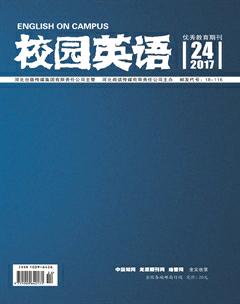From Equivalence to Skopos: a theoretical ‘dialogue’ between Nida and the Functional School
Lu+Chanyu
【Abstract】Dynamic Equivalence and Skopos Theory are two important translation theories in the fields of translation, which many scholars spare no efforts to research on. This essay intends to compare and complement between Nidas Dynamic Equivalence and Skopos theory after briefly reviewing these two translation theories. It is aimed at helping readers improve their translation skills via stimulating them to consider translation issues from different angles.
【Key words】translation theories; Nidas Dynamic Equivalence; Skopos theory
1. Nidas Dynamic Equivalence
Among Nidas theories, the core is “Dynamic Equivalence” which was put forward in 1964. The meaning of Dynamic Equivalence is to let translators focus on the meaning and spirit of the original text rather than language structure. For Nida, a successful translation work must achieve equivalence and readers response.
Literal translation emphasizes faithfulness. Its main focus point is the linguistic form. In order to express its doctrine, dynamic equivalence plays an essential role in the translation of The Bible, so content comes first and form followed.
However, it still has its own limitation. As for literary works, the aim of its author most time needs readers to be carefully observed and captured.
To sum up, Nida emphasizes reader response and seek equivalence. However, we have to admit that dynamic equivalent has its own limitation when dealing with cultural differences. “Equivalent effect is the desirable result, rather than the aim of any translation.” (Newmark, 1998).
2. Skopos Theory
Skopos theory has been put forward by Han J. Vermeer in the 1970s. Skopos theory regards translating as a purposeful human communicative activity based on the source text.
As Hans stated, “what the skopos states are that one must translate, consciously and consistently, in accordance with some principle respecting the target text. The theory does not state what the principle is: This must be decided separately in each specific case.” (Reiss, Vermeer & Nord, 2013). Firstly, skopos theory provides a reasonable and scientific judgment standard for translation. Secondly, the translators status has been upgraded. Thirdly, skopos theory lay a foundation for the translation of practical style work.
Besides, skopos theory still has drawbacks. Skopos theory doesnt precisely define the scope, and there is a blur distinction between translation and rewrite.Also, the meaning of source text has been denied and the equivalence of the source and target text has been ignored.
3. Comparison and complementarity between the two theories
For Nida, translation consists in reproducing in the receptor language the closest natural equivalent of the source language message, first in terms of meaning, and secondly in terms of style.
Hans Vermeer considers translation as the communication of the meaning of a source-language text by means of an equivalent target language text.
Source texts status in dynamic equivalence theory is more important than in the other one. Based on source texts function in source language context, dynamic equivalence want to seek the same effect in the translated context so that to achieve equivalence between the two languages. However, skopos theory points out that be faithful to the original text is not the unique standard.
Conclusion
From the above introduction and comparison, we can draw a conclusion that both theories have pros and cons. There exist similarities and differences, obviously, differences are more than similarities. To some extent, skopos theory can be seen as a breakthrough of dynamic equivalence. If translators could combine the two theories when doing translation, they may achieve better translation effects.
References:
[1]Jeremy Munday.Introducing Translation Studies[M].Routledge Taylor & Francis Group,2012.
[2]Jeremy Munday,“Main issues of translation studies”, Introducing Translation Studies:Theories and Applications.London and New York:Routledge,2001,pp.4-17,72-88.
[3]Reiss Katherina,Vermeer Hans J.,Nord Christiane.Towards a General Theory of translational action:Skopos Theory Explained.St Jerome Publishing,2013.
作者簡介:陆潺予(1991-),女,黑龙江伊春人,文学硕士,专业:电脑辅助翻译,主要研究方向:翻译理论。

